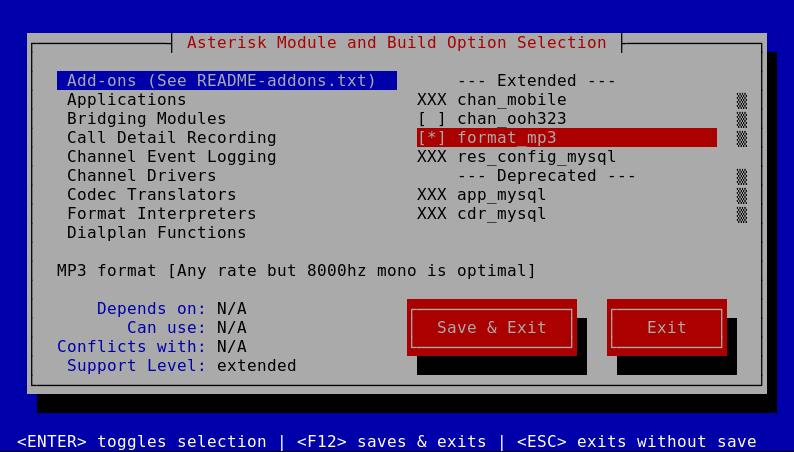


- Install freepbx on centos 7 how to#
- Install freepbx on centos 7 update#
- Install freepbx on centos 7 software#
- Install freepbx on centos 7 password#
mkdir /var/You can create it with nano and enter the following lines: nano /etc/httpd/conf.d/ Now, configure Apache by creating a document root folder for the website. Next, you’ll need mod_ssl to configure Let’s Encrypt. We recommend checking the system first just to make sure it’s updated. Important: We use “ hostinger-dev-9.xyz” as our test site, but you have to change it to your site’s name.
Install freepbx on centos 7 how to#
Let’s take a look at how to install it on your server. Let’s Encrypt offers a free SSL certificate. If you want Apache to start automatically at boot, enable it with: sudo systemctl enable httpd How to Install SSL Certificate with Let’s Encrypt Now to start using Apache, type in: sudo systemctl start httpd
Install freepbx on centos 7 software#
On CentOS 7, Apache can be installed through software repositories by entering this command on the terminal: sudo yum install httpd Luckily on Hostinger, users can choose to either have Apache preinstalled on their servers or to install it manually. If Apache is installed, you will see a result similar to the one below. You can easily test this by typing httpd -v when accessing the server through SSH. How to Install SSL Certificate With Comodoīefore installing SSL, make sure that Apache (web server software) is already installed on your CentOS.

Install freepbx on centos 7 update#
Mysql> UPDATE `asterisk`.`freepbx_settings` SET `value` = ' ' WHERE `freepbx_settings`.`keyword` = 'AMPMGRPASS'
Install freepbx on centos 7 password#

# ln -s phpMyAdmin-3.5.5-all-languages phpmyadmin SSLCertificateKeyFile /etc/pki/tls/private/localhost.keyĬustomLog logs/ssl_phpmyadmin_request_log \ SSLCertificateFile /etc/pki/tls/certs/localhost.crt SSLCipherSuite ALL:!ADH:!EXPORT:!SSLv2:RC4+RSA:+HIGH:+MEDIUM:+LOW TransferLog logs/ssl_phpmyadmin_access_log to /etc/httpd/conf.d/ssl.conf: DocumentRoot "/var/www/phpmyadmin".to /etc/httpd/nf: NameVirtualHost *:443.# cat contrib/init.d/rc.redhat.asterisk | sed 's/_ASTERISK_SBIN_DIR_/\/usr\/sbin/' > /etc/init.d/asterisk # ln -s /usr/lib/libasteriskssl.so.1 /usr/lib64/libasteriskssl.so.1.configure -prefix=/usr -exec-prefix=/usr -with-crypto -with-dahdi -with-iconv -with-libcurl -with-gmime -with-iksemel -with-mysqlclient -disable-xmldoc -with-pri -with-spandsp -with-ldap -with-libcurl -with-popt -with-resample -with-speex # yum -y install mc make gcc kernel-devel gcc-c++ ncurses-devel httpd mysql-server mysql mysql-devel php iksemel iksemel-devel crypto-utils openssl-devel gmime gmime-devel spandsp spandsp-devel openldap openldap-devel popt-devel libresample libresample-devel speex speex-devel libcurl-devel speex-tools svn sqlite-devel mod_ssl php-mysql php-pear-MDB2-Driver-mysqli php-mbstring php-gd php-mcrypt libxml2-devel lame bison audiofile-devel sox php-pear-DB php-posix.Turn off SELinux: # vi /etc/selinux/config.2 Installing DAHDI, libPRI and Asterisk.


 0 kommentar(er)
0 kommentar(er)
